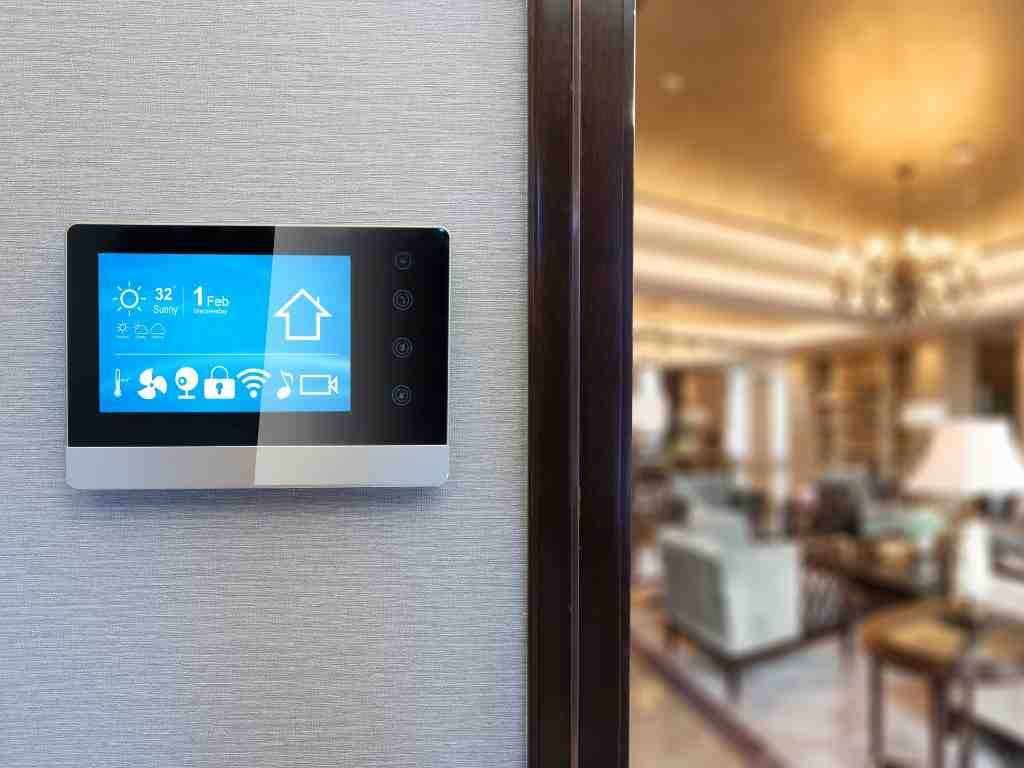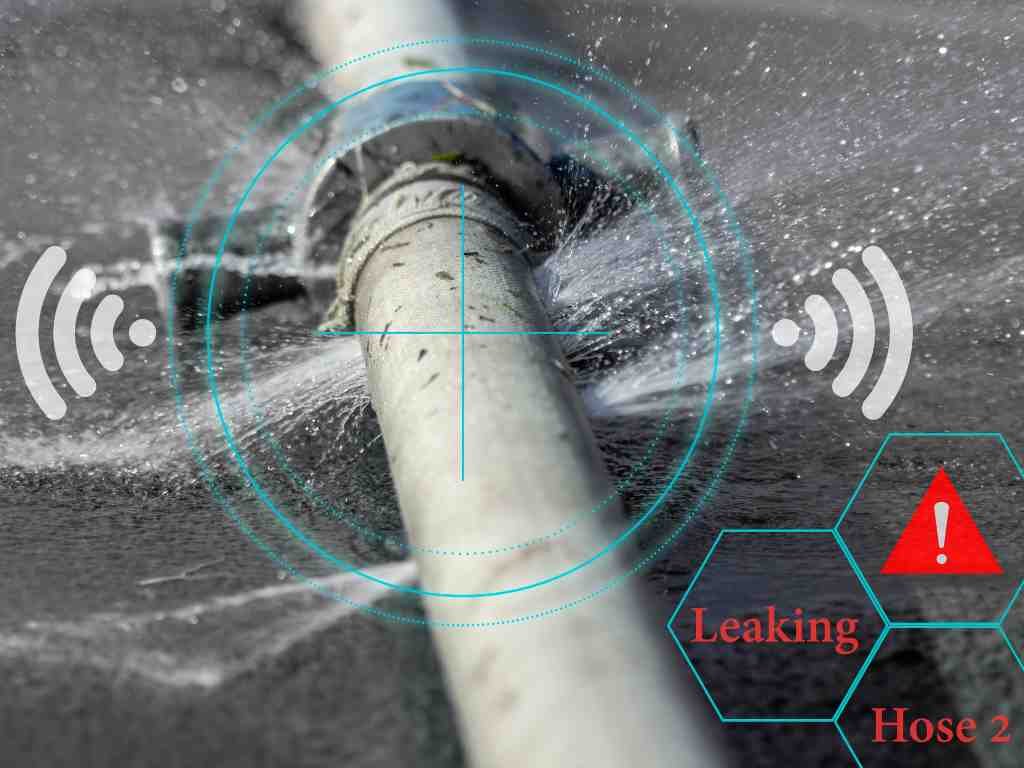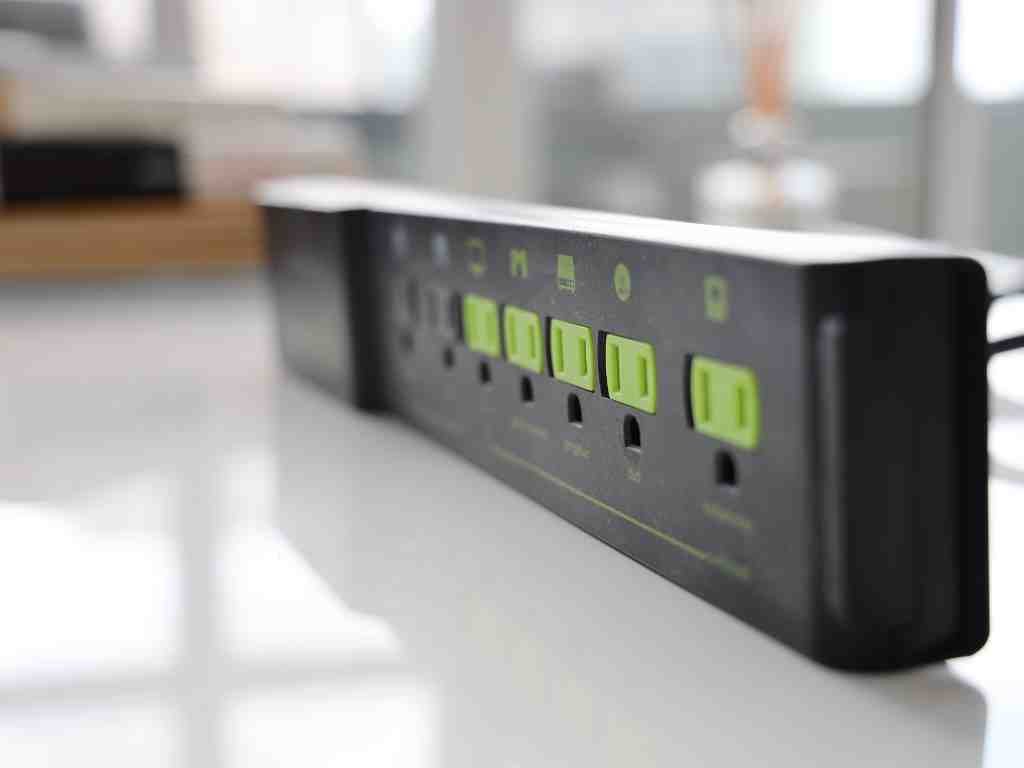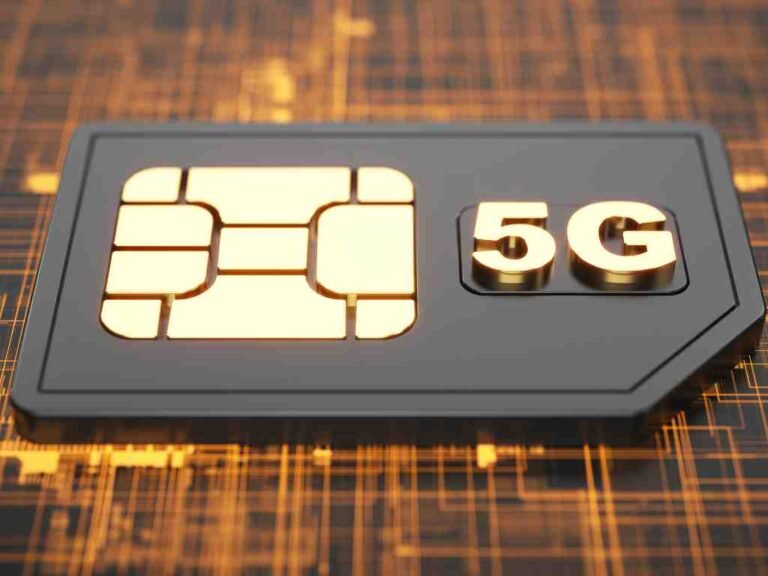As we strive to live more sustainably and reduce our carbon footprint, smart home technology has become an increasingly important aspect of energy efficiency. By integrating these devices into your home, you can optimize energy consumption, save on utility bills, and contribute to a more environmentally friendly future.
In this article, we’ll explore five must-have smart home devices that will help you achieve optimal energy efficiency in your home.
Smart Thermostats: Revolutionizing Home Comfort with Intelligent Technology
The advent of smart thermostats has transformed the way we approach home temperature regulation, offering a plethora of benefits that go beyond mere convenience. These intelligent devices have evolved to learn and adapt to an individual’s daily routine, preferences, and lifestyle, resulting in a more comfortable, energy-efficient, and cost-effective living experience.

The Science Behind Smart Thermostats
Smart thermostats employ advanced algorithms and sensors to gather data on temperature, humidity, and occupancy patterns. This information is then used to create a personalized heating and cooling plan that takes into account the user’s schedule, preferences, and habits. By analyzing this data, smart thermostats can optimize energy consumption in several ways:
* Advanced learning capabilities: Smart thermostats learn and adapt to an individual’s temperature preferences over time, making adjustments to ensure optimal comfort levels.
* Predictive analytics: These devices use machine learning algorithms to predict when a user will be away from home or asleep, adjusting the temperature accordingly to minimize energy consumption.
* Real-time monitoring: Smart thermostats provide real-time monitoring of energy usage, allowing users to track their consumption and make adjustments as needed.
Benefits of Smart Thermostats
The integration of smart thermostats into home comfort has numerous benefits for both homeowners and the environment. Some of the key advantages include:
* Reduced Energy Consumption: By optimizing heating and cooling usage, smart thermostats can help reduce energy consumption by up to 20-30%, resulting in lower utility bills and a smaller carbon footprint.
* Increased Comfort Levels: Smart thermostats learn an individual’s temperature preferences, ensuring that homes are always at the optimal temperature for comfort and relaxation.
* Savings on Utility Bills: By reducing energy consumption and optimizing heating and cooling usage, smart thermostats can help homeowners save up to $100-$300 per year on their utility bills.
- COMFORT COMES IN YOUR COLOR. Personalize your Wi-Fi Smart Color Programmable Thermostat to fit your décor.
- SAVE ENERGY AND GET REWARDED by checking with your energy provider about available rebates. Plus, eligible customers can enroll in their local Utility’s “DEMAND RESPONSE PROGRAM” which can reward you …
- YOUR SCHEDULE. YOUR WAY. Flexible programming options for your schedule or utility company’s peak rate pricing.
Additional Features and Integrations
Smart thermostats often come with a range of additional features and integrations that enhance their functionality and user experience. Some of these features include:
* Voice Control: Many smart thermostats are compatible with popular voice assistants, allowing users to control temperature settings with ease using voice commands.
* Remote Access: Smart thermostats can often be controlled remotely through mobile apps or websites, providing users with flexibility and convenience.
* Integration with Other Smart Devices: Some smart thermostats integrate seamlessly with other smart devices, such as lighting systems and security cameras, creating a comprehensive home automation system.
Smart thermostats have revolutionized the way we approach home comfort, offering a range of benefits that go beyond mere convenience. By leveraging advanced technology and machine learning algorithms, these intelligent devices can optimize energy consumption, increase comfort levels, and provide cost savings for homeowners.
Smart Light Bulbs: Illuminating the Path to Energy Efficiency and Home Security
The advent of smart light bulbs has transformed the way we approach lighting, offering a plethora of benefits that go beyond mere convenience. These intelligent bulbs have evolved to incorporate advanced technologies such as sensors, Wi-Fi connectivity, and machine learning algorithms, resulting in a more energy-efficient, secure, and convenient living experience.

The Science Behind Smart Light Bulbs
Smart light bulbs are equipped with a range of cutting-edge features that enable remote control and scheduling, allowing users to harness the full potential of these intelligent devices. Some of the key technologies used in smart light bulbs include:
* Sensors: These bulbs are equipped with sensors that can detect ambient light levels, motion, and temperature changes. This data is then used to optimize lighting settings for improved energy efficiency.
* Wi-Fi Connectivity: Smart light bulbs connect to the internet via Wi-Fi, enabling users to control them remotely using mobile apps or voice assistants.
* Machine Learning Algorithms: These devices use machine learning algorithms to analyze usage patterns and adjust lighting settings accordingly.
Benefits of Smart Light Bulbs
The integration of smart light bulbs into home lighting has numerous benefits for both homeowners and the environment. Some of the key advantages include:
* Energy-Efficient LED Lighting: Smart light bulbs are designed with energy-efficient LEDs that consume up to 90% less energy than traditional incandescent bulbs.
* Reduced Electricity Consumption: By optimizing lighting usage, smart light bulbs can reduce electricity consumption by up to 50%, resulting in lower utility bills and a smaller carbon footprint.
* Enhanced Home Security through Automated Lighting Schedules: Smart light bulbs can be programmed to turn on and off automatically, providing an added layer of home security through the use of motion-sensitive lighting.
- Multicolor & Auto White: Dimmable 16 million colors and warm to cool whites(2500K-6500K). Set your bulb to automatically adjust its color temperature to match natural light patterns from dawn to dusk….
- Voice Control: Get hands-free control of your lights with your voice via Amazon Alexa or Google Assistant. Perfect for times when your hands are full or entering a dark room.
- Remote Control: Control your smart light bulb from anywhere with your smartphone using the free Kasa smart app (iOS, Android). Dim, turn on or off or change the colors of your light bulb remotely at y…
Additional Features and Integrations
Smart light bulbs often come with a range of additional features and integrations that enhance their functionality and user experience. Some of these features include:
* Voice Control: Many smart light bulbs are compatible with popular voice assistants, allowing users to control lighting settings using voice commands.
* Remote Access: Smart light bulbs can often be controlled remotely through mobile apps or websites, providing users with flexibility and convenience.
* Integration with Other Smart Devices: Some smart light bulbs integrate seamlessly with other smart devices, such as security cameras and thermostats, creating a comprehensive home automation system.
Smart Home Ecosystems
The integration of smart light bulbs into existing smart home systems can create a seamless and connected living experience. Some popular smart home ecosystems include:
* Amazon Alexa: Smart light bulbs can be integrated with Amazon Alexa, providing users with voice control and automated lighting schedules.
* Google Assistant: Smart light bulbs can also be integrated with Google Assistant, allowing users to control lighting settings using voice commands.
In conclusion, smart light bulbs have revolutionized the way we approach lighting, offering a range of benefits that go beyond mere convenience. By harnessing advanced technologies such as sensors and machine learning algorithms, these intelligent devices can optimize energy efficiency, enhance home security, and provide a convenient living experience.
Smart Home Hubs: The Central Nervous System of a Smart Home Ecosystem
The rise of smart home technology has led to an explosion in the number of connected devices, each with its own unique features and capabilities. However, this proliferation of devices can often result in a cluttered and disjointed living experience. Smart home hubs are designed to address this issue by connecting and controlling multiple smart devices in your home, creating a seamless and efficient ecosystem.

The Science Behind Smart Home Hubs
Smart home hubs serve as the central nervous system of a smart home, integrating and coordinating various devices to create a cohesive and automated living space. These devices typically employ advanced technologies such as:
* Hub-Based Architecture: Smart home hubs use a hub-based architecture, where all connected devices are linked through a central hub. This allows for easy control and management of multiple devices from a single interface.
* Wireless Connectivity: Smart home hubs often utilize wireless connectivity methods, such as Wi-Fi or Bluetooth, to enable seamless communication between devices.
Benefits of Smart Home Hubs
The integration of smart home hubs into your living space offers numerous benefits, including:
* Seamless Integration Between Various Devices: Smart home hubs can connect and control a wide range of devices, from lighting systems and thermostats to security cameras and door locks. This seamless integration enables users to control their entire smart home ecosystem with ease.
* Simplified Setup and Management: Smart home hubs typically come with user-friendly interfaces that simplify the setup and management process for both beginners and experienced tech enthusiasts.
* Enhanced Energy Efficiency through Remote Monitoring: By providing remote monitoring capabilities, smart home hubs enable users to optimize energy consumption in real-time. This allows homeowners to identify areas of inefficiency and make adjustments accordingly.
- Easiest way to make your home a smart home: Wirelessly connect and control a huge range of smart devices – over 5,000 are available from dozens of brands – including voice assistants, lights & switche…
- Automate connected devices: Any device you connect can be included into automations which can be intelligently managed. Now many automations work locally even when internet service is disrupted.
- Control via App or Voice: Monitor and control connected devices, and run automations, using the Samsung SmartThings app on Android, iOS, and iPadOS, or voice user interfaces Amazon Alexa and Google As…
Advanced Features and Capabilities
Some modern smart home hubs come equipped with advanced features and capabilities that further enhance their functionality:
* Voice Control Integration: Many smart home hubs are compatible with popular voice assistants, such as Amazon Alexa or Google Assistant. This allows users to control their devices using voice commands.
* Geofencing and Location-Based Control: Some smart home hubs support geofencing, which enables users to set specific locations or zones within their home. This feature allows for location-based control of devices, such as turning off lights when leaving the house.
* Energy Harvesting and Power Management: Advanced smart home hubs may incorporate energy harvesting technologies that allow them to recharge themselves using ambient energy sources.
Popular Smart Home Hub Options
Some popular smart home hub options include:
* Samsung SmartThings: A widely recognized brand in the smart home industry, Samsung SmartThings offers a comprehensive platform for connecting and controlling multiple devices.
* Amazon Echo Hub: Amazon’s Echo hub is designed to work seamlessly with its Echo smart speakers, providing users with voice control and centralized device management.
* Google Home Hub: Google’s Home hub integrates with the company’s popular Nest brand, offering advanced features like energy monitoring and geofencing.
In conclusion, smart home hubs have revolutionized the way we live and interact within our homes. By connecting and controlling multiple devices, these central nervous systems create a seamless and efficient living experience that simplifies setup and management while enhancing energy efficiency through remote monitoring.
Smart Water Sensors: The Silent Guardians of a Leaking Home
Water is an essential element for human life, yet even the smallest droplets can become a significant problem when it comes to water leaks. These invisible hazards can cause catastrophic damage to properties, leading to costly repairs and potentially disastrous consequences. Smart water sensors are designed to address this issue by detecting leaks and notifying homeowners immediately.

The Science Behind Smart Water Sensors
Smart water sensors employ advanced technologies to detect even the slightest signs of water leakage. These devices typically utilize:
* Acoustic Sensors: These sensors use sound waves to detect the vibrations caused by running water. By analyzing these patterns, smart water sensors can identify potential leaks in real-time.
* Water-Resistant Materials: Smart water sensors are built with water-resistant materials that protect them from exposure to water and humidity, ensuring accurate readings even when exposed to liquid environments.
* Wireless Connectivity: Many smart water sensors connect to the internet via wireless connectivity methods, such as Wi-Fi or Bluetooth. This allows homeowners to receive notifications on their smartphones or tablets, providing peace of mind and prompt action.
Benefits of Smart Water Sensors
The integration of smart water sensors into home plumbing systems offers numerous benefits for both homeowners and the environment:
* Reduced Water Waste: Smart water sensors help identify leaks early, reducing water waste and saving household budgets. By detecting leaks promptly, these devices can prevent gallons of clean water from flowing down the drain.
* Prevention of Costly Damage from Hidden Leaks: Traditional leak detection methods often rely on visual inspections or manual checks, which may miss hidden leaks. Smart water sensors, however, can detect leaks anywhere in the plumbing system, preventing costly repairs and minimizing property damage.
* Enhanced Home Safety through Early Leak Detection: Accidents involving water can be hazardous for people and pets. By detecting leaks quickly, smart water sensors reduce the risk of slips, falls, and other safety hazards.
- Real-time Alerts & Various Notifications: Connect the gateway to WiFi, and the water detector will instantly send emails, app notifications & alerts to your phone when water leakage occurs.
- Connects to Multiple Sensors: This water leak detector is equipped with a powerful WiFi connection gateway, allowing you to connect up to 10 sensors simultaneously, easily weaving a water protection n…
- Drip and Leak Detection: The water sensor alarm with 2 groups of backwater detector probes & 1 group of front probes for dripping and leaking detection. Use the App to name each sensor with its locati…
Additional Features and Capabilities
Some advanced smart water sensors come equipped with additional features that enhance their functionality:
* Alert Systems: Many smart water sensors are paired with alert systems that notify homeowners via email or mobile app when a leak is detected. This enables swift action to be taken.
* Maintenance Reminders: Some smart water sensors can send maintenance reminders, ensuring homeowners stay on top of routine checks and repairs.
Popular Smart Water Sensor Options
Some popular smart water sensor options include:
1. WaterCop Leak Alert System: A widely recognized brand in the leak detection industry, WaterCop’s Leak Alert System offers a comprehensive solution for detecting and preventing leaks.
2. Kohler Smart Leak Sensor: Kohler’s Smart Leak Sensor integrates with its Smart Home platform, providing real-time leak detection and alerts via mobile app notifications.
3. FlowGuardian Leak Detection System: FlowGuardian is designed to work seamlessly with most plumbing systems and offers a range of features, including customizable alert settings.
In conclusion, smart water sensors are an indispensable tool in preventing water leaks and saving households from costly damage. By detecting even the slightest signs of moisture, these devices provide early warning systems for homeowners, ensuring prompt action can be taken to prevent accidents and minimize property harm.
Smart Plug Power Strips: Revolutionizing Home Energy Management with Intelligent Control
In today’s era of increasingly complex smart homes, energy efficiency and convenience have become paramount. With the proliferation of digital devices and appliances, managing household energy consumption has become a daunting task for many homeowners. Smart plug power strips are designed to address this issue by providing an intuitive and comprehensive solution for controlling and monitoring energy usage of individual appliances.

The Science Behind Smart Plug Power Strips
Smart plug power strips employ advanced technologies to monitor and control energy usage, enabling homeowners to optimize their energy consumption and reduce waste. These devices typically utilize:
* Wi-Fi or Bluetooth Connectivity: Smart plug power strips often connect to the internet via Wi-Fi or Bluetooth, allowing users to access real-time data on energy consumption and adjust settings remotely.
* Advanced Sensors and Monitoring Technology: Many smart plug power strips feature advanced sensors that detect changes in energy usage patterns, enabling automation of various functions.
Benefits of Smart Plug Power Strips
The integration of smart plug power strips into home energy management systems offers numerous benefits for both homeowners and the environment:
* Real-time Monitoring of Energy Consumption: Smart plug power strips provide real-time data on energy consumption, allowing users to identify areas of inefficiency and optimize their usage accordingly.
* Automated Switching Off for Energy-Efficient Mode: By analyzing energy usage patterns, smart plug power strips can automatically switch off devices to an energy-efficient mode when not in use, reducing overall energy consumption and costs.
* Enhanced Home Safety through Device Supervision: Smart plug power strips enable users to monitor the status of individual appliances, ensuring they are functioning correctly and safely. This is particularly important for households with children or pets.
- 6 smart outlets: Independently control 6 smart outlets, and charge 3 devices with built in USB ports; Ideal for controlling electronics in your home, home office, or small business
- Surge protection: ETL certified surge protection shields sensitive electronics and appliances from sudden power surges that can occur during weather storms and cause irreparable damage
- Energy monitoring : Monitor how much energy devices connected to the power strip consume; Check on each one from your Kasa smart app and turn off ones that are using too much power
Additional Features and Capabilities
Some advanced smart plug power strips come equipped with additional features that enhance their functionality:
* Voice Assistant Integration: Many smart plug power strips are compatible with popular voice assistants like Amazon Alexa or Google Assistant, enabling users to control devices using voice commands.
* Geofencing and Location-Based Control: Some smart plug power strips support geofencing, allowing users to automatically turn off appliances when leaving the house or during certain times of the day.
Popular Smart Plug Power Strip Options
Some popular smart plug power strip options include:
1. TP-Link Smart Plug Power Strips: TP-Link’s smart plugs offer a range of features, including real-time energy monitoring and automated switching off for energy-efficient mode.
2. Belkin WeMo Power Strips: Belkin’s WeMo smart plugs integrate with their popular smart home platform, providing users with comprehensive control over household devices.
3. Insteon Smart Plug Power Strips: Insteon’s smart plugs offer advanced features like geofencing and voice assistant integration, making them a top choice for smart home enthusiasts.
By incorporating smart plug power strips into home energy management systems, homeowners can enjoy a range of benefits, from real-time monitoring to automated switching off and enhanced safety. With their comprehensive range of features and capabilities, these devices have revolutionized the way we manage household energy consumption, paving the way for a more sustainable and efficient future.
By embracing smart home technology, you can unlock a world of possibilities, from reduced energy consumption to enhanced comfort levels and improved home security. As you integrate these five essential devices into your home, remember to explore additional features and capabilities that cater to your unique needs and preferences.
In conclusion, smart home technology is poised to revolutionize the way we live, work, and interact with our environments. By embracing this transformative technology, homeowners can create a haven of efficiency, comfort, and security that not only reduces their carbon footprint but also enhances their overall quality of life.








